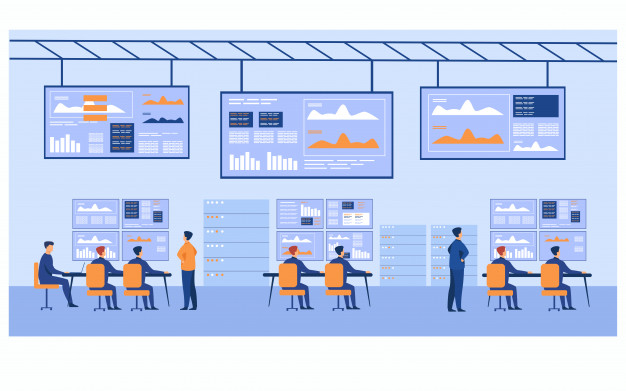
The second decade of the millennium is ending with many developing nations still lost in their digital transformation processes. Fortunately, a reliable innovation is sweeping top companies proving itself as a critical solution: the Digital Factory (DF) model. This creative yet no-nonsense take based on UX research and other key aspects of processing and administration enables entities to streamline and collectively improve their output.
Digital factories have proved successful in many corporate setups, with McKinsey stating tech development cost reductions of up to 30% in their DF deployments.

A walkthrough of the Digital Factory
What exactly is the DF model? It’s a highly versatile set of small, cross-functional teams that churn out the most efficient products, solutions, and experiences possible using reusable tools and processes. It is an innovation of digital transformation services that governments can tap to leapfrog into the data-savvy modern era.
Each team is made up of typically less than 20 people and designated with particular goals. Overseeing their operation is a central committee of administrators and a pool of experts that guide the teams for more intricate tasks or requirements. With this setup, the Digital Factory can solve problems one at a time yet at a faster pace than thinking up a complex, one-stop-shop solution approach.
Why is this advantageous for developing nations and their journey to empowered digital platforms? The answer is simple: it is a model that works, adjusts, and improves as it grows.
There are three areas of performance that the DF model can help up-and-coming states with:

Minimizing overheads and maximizing functions
Perhaps the most critical problem in the migration to fully-digital systems for governments is costs and overshoots. The needs and elements required by rising nations differ largely from mature ones, according to a study by Adlittle. Due to these differences and lack of comprehensive needs research, overhead spending usually skyrockets.
Deploying the DF model reduces costs in the long run. Teams are assembled to deliver on clear, plotted “missions,” and the project overseers determine the end-to-end needs that will support current and future developments. Using subject matter experts on a per-need basis (compared to having them with one team throughout the project) enhances each team’s flexibility and prevents the experts from being under-utilized or encumbered.
For example, teams upgrading national emergency response technologies can build better systems at scale. In 2015, Nepal launched the 2015 Open Data Portal that gave relief workers and partner agencies access to crucial government data to aid their response efforts. As a result, both the general public and business sectors were able to leverage technology in rebuilding and economic recovery.
With the help of a digital factory setup, government agencies can reduce time spent and costs involved in “fishing” solutions for problems that have already been identified.
Enhancing autonomy to streamline workflows and processes
Digital transformation consulting methods need an efficient flow of information and control. Some complications stemming from using traditional methods of administration on projects are conflicting directives, data silos, and delays due to bureaucratic processes such as paperwork.
The DF model solves this by applying semi-autonomy for the teams assigned to their tasks. Leadership only provides the goals as the teams, with their small and agile setup, can prioritize and allocate tasks without influence or further requirements from the top brass.
Combined with input from the DF’s pool of experts at crucial stages of solutions creation, the teams build a culture of consistent alignment and transparency across the structure. Small numbers per team remove the need for more managers and engineers, improving the line of command and increasing accountability per person in the project.
For example, the British Council’s Project Badiliko (in partnership with Microsoft) help schools and communities in select areas in Africa gain valuable access to information technology. Similar projects are also run across Southeast Asia to support the development of a digital backbone for their corporate sector.
Using a digital factory setup, governments can enhance the responsiveness of agencies dedicated to each sector in a faster and interconnected way. Teams installed across tax collection, labor and employment agencies, and other governmental functions can coordinate and automate secure access and use of data to make citizen- or business-government transactions more convenient and reliable.
Creating a transformative culture of continuous involvement
A global study by Deloitte revealed that only 14% of organizations were driven by government directives, with most driven by cost and budget pressures as well as public demand. This poor leadership participation is probably commonplace in developing countries, where productivity is hampered by disorganized priorities, low economic output, and massive foreign loans.
Investing in the DF model engages management and work teams to work and thrive together, allowing governments to expand and upgrade while maintaining their budgets. The setup bands as one the functions of what could be redundant departments and so inhibits spending on unnecessary steps or task groups.
Its simple hierarchy justifies a quick connection to significant authorities in the chain of command. Simply put, getting the green light is a crucial factor in the speed a digital factory can operate. This facilitates a continuous, healthy exchange of task assignment and solutions delivery between the working teams, project overseers, and the involved government officials managing them.
Conclusion
Perhaps the biggest benefit the DF model can deliver for developing nations is a vastly improved user experience. Citizens and the business sector can gain quick access to brilliant solutions that cater to their needs. The agility of digital factories in creating the required infrastructure, supporting technologies, and interfaces can turn a slumping modernization platform into a responsive environment that delivers – and improves – as needed.
Digital transformation resource and service providers such as USER focus on developing solutions that can help organizations use data to create better strategies and products for customers. For more information, you can reach out via https://dev-user-website.useritech.com/contact/.
Sources:
https://www.forbes.com/sites/smartsheet/2019/03/29/how-digital-transformation-is-revolutionizing-government/?sh=1a5381bbd3a4
https://www.mckinsey.com/business-functions/mckinsey-digital/our-insights/welcome-to-the-digital-factory-the-answer-to-how-to-scale-your-digital-transformation#
https://www.britishcouncil.org/voices-magazine/how-can-developing-countries-close-digital-divide
https://www.adlittle.com/sites/default/files/viewpoints/adl_digital_in_emerging_markets.pdf
https://blog.bti-project.org/2019/09/18/digitalization-curse-blessing-developing-economies/
https://hbr.org/2016/01/how-local-governments-are-using-technology-to-serve-citizens-better




